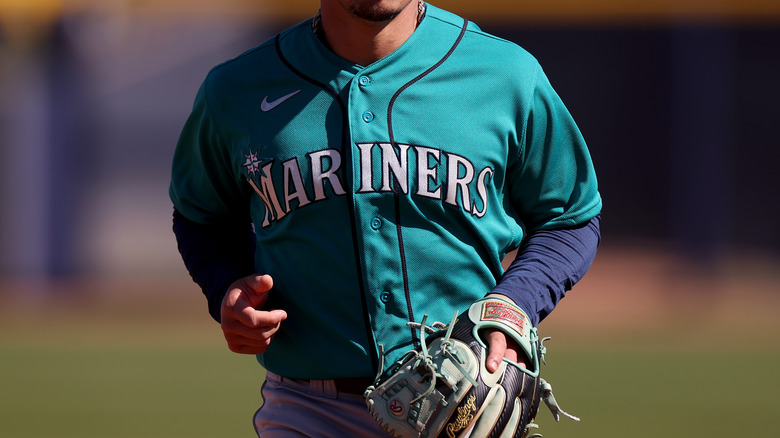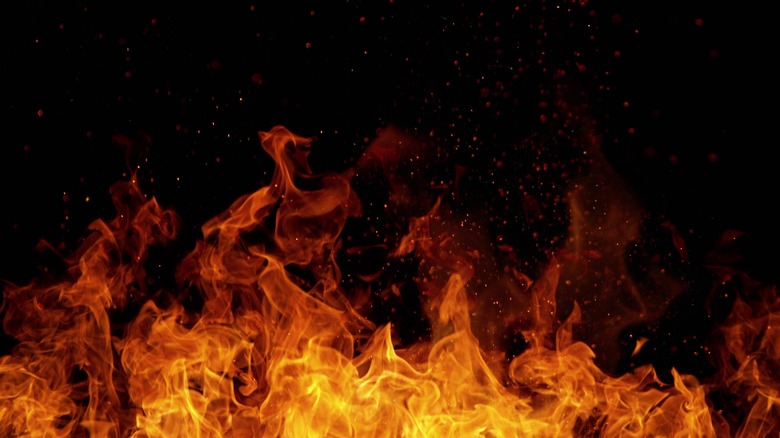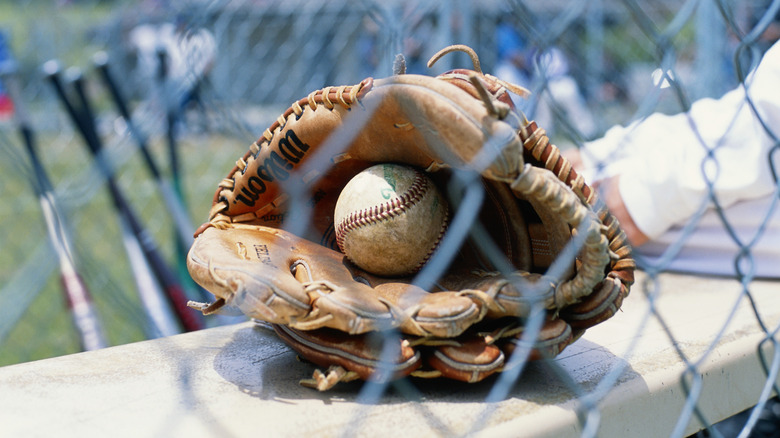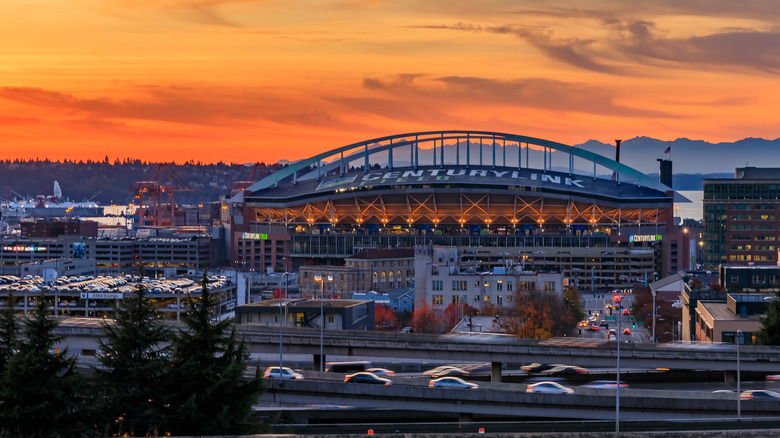The Seattle Mariners Have An Arsonist To Thank For Their Team's Existence
As complex as the playbooks of professional sports teams can get, they're nothing compared to the intricacies of player and team management happening under the hood. Besides never-ending lineup changes and Byzantine team politics, everything is ultimately subject to change: team name, home city, stadium, funding and sponsorship, everything. And then there's the overhead of funding a team right down to the concessions at stadiums, maintenance of vending machines, locker room custodians, and every nickel and dime of salaries along the way. In the end, it should be no surprise — but also still shocking — that besides the difficulties of running a Major League Baseball team, the average cost is $1.26 billion, as Tbones Baseball says.
Even back in the late 1800s in professional baseball's early days, volatility and cost characterized the game. Back then, catcher Daniel Dugdale moved around as much as modern players do, if not more. He changed teams nearly every year from 1884 to 1895, per History Link. The Klondike Gold Rush drew him to Seattle in 1898, where he made a fortune in real estate and promptly gave that fortune right back to the sport that he loved. He single-handedly built up Seattle-based baseball, formed multiple teams and leagues, and built two entire stadiums, including the eponymous Dugdale Field in 1913, as History Link says. Then in 1932, 19 years later, an arsonist burned Dugdale Field to the ground. But if Dugdale Field didn't burn down, the Seattle Mariners might never have existed.
An arsonist's confession
It's hard to imagine how devastated Daniel Dugdale must have felt when he saw his 15,000-person double-deck wooden grandstand burn to the ground in 1932. But if timing is any indication, and as if Dugdale's soul really was tied to Dugdale Field, Dugdale himself died a mere two years later in 1934. In lieu of photographs of the blaze, the Rainier Valley Times depicts a cartoon sketch of firefighters racing to hose down the flames, as History Link shows. The one picture we have very symbolically shows Dugdale Field's electric lights refusing to go out even as the stadium beneath them burns. The fire was reported at 1 a.m., and not only destroyed Dugdale Field to the tune of $75,000 of damage (over $1.6 million modernly, per the CPI Inflation Calculator) but damaged nearby homes.
At first, police assumed that Dugdale Field burned down due to an accident. After all, as KING5 News says, the field has just hosted a doubleheader. Maybe in the aftermath of the games, a careless fan had tossed a cigarette to the ground and not stamped it out. The blaze also happened on July 2, so maybe some folks were setting off fireworks for July 4th early and something went wrong. It wasn't until 1935, three years later and one year after Daniel Dugdale's death, that Robert Driscoll confessed to burning the stadium down. As Driscoll said, he was "sore at the world" because of his "destitute circumstance."
From the ashes of Dugdale Field
As it turns out, Robert Driscoll was a serial arsonist who confessed to setting over 140 fires, per KING5 News (History Net quotes 115 fires). He was "unemployed," "homeless," and "slept in boxcars." He wrote in his confession that he "gathered papers and kindling at the rear of the church building at 753 Lake View Boulevard" and set them on fire at the northwest corner of Dugdale Field "with the intent of the destruction of the property."
Up until its destruction, Dugdale Field had been home to the minor league Seattle Giants (later the Seattle Indians), who as History Link says, turned to Civic Field — a grassless football stadium full of "nothing but rocks" — as their temporary home. Sportspress News says that the Indians were headed to bankruptcy by 1937. Federal marshes even conducted a raid on the Indian's box office to grab whatever cash they could to put toward the team's overdue taxes.
At this point we have the owner of Rainier Brewery Emil Sick to thank for saving the Indians, giving them a new home, and eventually granting us the Seattle Mariners. Sick bought the nearly bankrupt Indians in 1938 for a mere $100,000. He then built a new, state-of-the-art concrete-and-steel stadium for $350,000 on the same site as Dugdale Field's then-empty lot. After three months of construction, Sick's Seattle Stadium — named to honor the people of Seattle — was ready on March 15, 1938.
A brand new major league team
Even before the Seattle Indians occupied Dugdale Field, the team had undergone a whole host of changes. As All Sports History says, they'd started as the Clamdiggers in 1903 until 1906. Between 1906 and 1912 the team got revived, renamed the Seattle Giants and Daniel Dugdale bought them. Dugdale built Dugdale Field in 1913 specifically to be the Giant's home, as History Link describes. Five years later in 1918, Dugdale sold the Giants, and one year after that the Giants entered the Pacific Coast League. In 1922 the Giants got their name changed to the Seattle Indians. Two years later in 1924 the Indians won the Pacific Coast League pennant and were on their way to the minor league Little World Series.
When Emil Sick, owner of Rainer Brewery, bought the Seattle Giants in 1938 he didn't just build a new stadium for them, he renamed the team yet again. Sick named his team after his brewery: the Seattle Rainiers. All Sports History explains that the Rainiers held on to this name through an absurd gamut of business dealings and complications that lasted for decades. Come 1969, under new ownership, the Seattle Giants got renamed the Seattle Pilots. Driven to bankruptcy like the Giants before them, the Pilots were sold to Milwaukee and become the Milwaukee Brewers. The American League expanded into Seattle in 1976, and 1977 saw the newly-formed Seattle Mariners take to the field for the first time.



